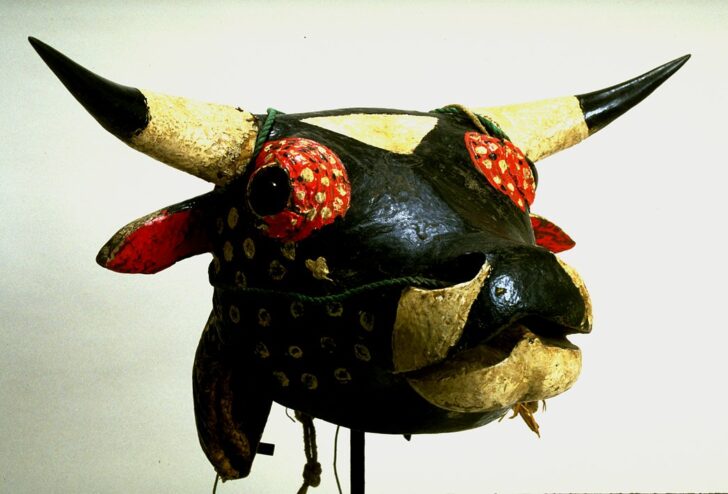Mask (vaca bruto, dugn’be type)
Bijogo

Description
March 28, 2009
Bidjogo masking traditions are distinguished by their robust, naturalistic representations of animals associated with the forces of both land and sea. Among the most expressive are the bovine masks, which appear at festivals and national holidays and in male initiation ceremonies.
This mask represents an ox and is danced by adolescent boys newly initiated into their age group. Crouching down on all fours, the dancer bucks and lunges like an untamed beast, fighting against the lead that is passed through its nostrils. The masquerade dramatizes the impulsive and undisciplined phase of boyhood that these young initiates are leaving behind. The wear evident on this mask attests to the vigor with which these masquerades are danced.
Subject Matter:
This is one of several types of bovine masks ( called vaca-bruto or “wild cattle” in Creole, the lingua franca of Guinea Bissau) performed at boys and men’s initiation ceremonies, festivals and national holidays. This particular mask is called dugn’be, which represents a domesticated ox and is danced by adolescent boys newly initiated into their age grade.
Physical Description:
Naturalistic cow’s head of carved from wood with eyes cut from the bottoms of glass bottles. Natural cow horns are attached. Head is predominantly black with white triangle on forehead, red pigment surrounding eyes, red in interior of ears, white chin, and white dots on cheeks and in red ground around eyes. Horns are white, tipped in black; a fiber cord runs through its nostrils and around back of head.
Usage Rights:
If you are interested in using an image for a publication, please visit https://umma.umich.edu/request-image/ for more information and to fill out the online Image Rights and Reproductions Request Form.